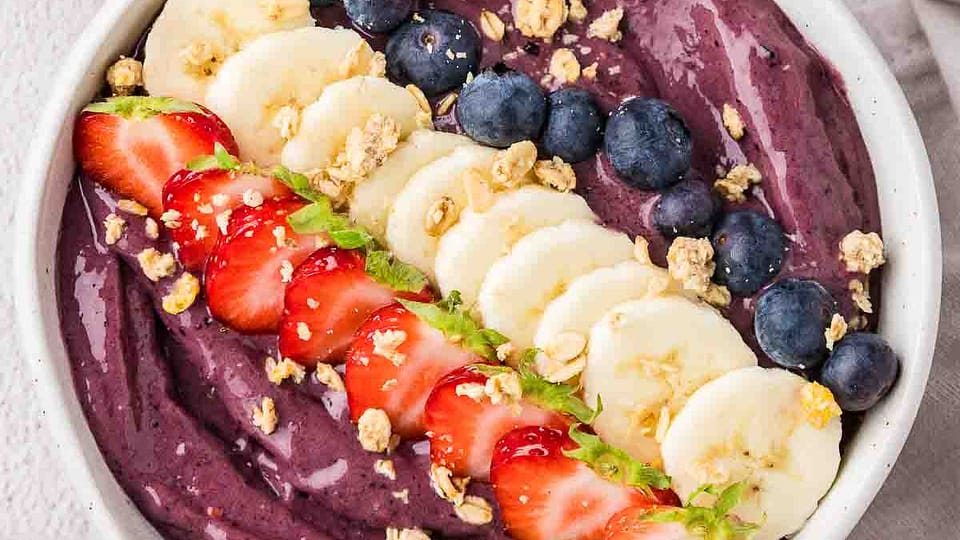
More Than Just a Post-Roll Snack
Why Brazilian Jiu-Jitsu Practitioners Love Açaí

If you’ve spent any time around a Brazilian Jiu-Jitsu gym, you’ve probably heard someone say, “Let’s grab some açaí after training.” It’s not just a random craving—it’s practically a ritual in BJJ culture. But have you ever wondered why açaí is so popular among Jiu-Jitsu athletes?
Let’s break down the connection between Brazilian Jiu-Jitsu and açaí, from their origins to why this Amazonian superfruit has become the go-to post-training treat.
A Quick Look at Brazilian Jiu-Jitsu
Brazilian Jiu-Jitsu (or BJJ for short) started back in the early 1900s when Japanese judoka Mitsuyo Maeda brought his knowledge of Judo to Brazil. He taught Carlos Gracie, whose family went on to evolve and adapt the art into what we now know as BJJ—focusing more on leverage, ground fighting, and submissions.
It gained massive popularity through the early days of the UFC, where smaller BJJ fighters like Royce Gracie dominated much larger opponents. Fast forward to today, and BJJ is a global sport, practiced by hobbyists, professional fighters, and everyone in between.
So, What’s the Deal with Açaí?
Açaí (pronounced ah-sah-EE) is a small, dark purple berry that comes from the Amazon rainforest. In its original form, it was a dietary staple for indigenous communities—typically served savory with fish or cassava.
But once it made its way to Brazil’s coastal cities in the ’80s and ’90s, the açaí bowl was born: blended with guaraná syrup and served cold, topped with granola, bananas, and other fruits. It quickly became a hit with surfers, athletes, and eventually… the BJJ crowd.
Why BJJ Athletes Are Obsessed with Açaí
💥It’s Perfect for Recovery
Training Jiu-Jitsu is tough. Rolling, drilling, conditioning—it takes a toll on your body. Açaí bowls offer a great mix of carbs, healthy fats, and (depending on your toppings) even a bit of protein. The antioxidants in açaí can also help fight inflammation and speed up recovery after a tough session on the mat.
💥It’s a Brazilian Thing
Both BJJ and açaí are deeply tied to Brazilian culture. For many athletes, especially those training in Brazil or following the lifestyle abroad, grabbing açaí after training feels like staying connected to the sport’s roots. It’s more than food—it’s a cultural tradition.
💥It Tastes Amazing
Let’s be honest—this stuff is delicious. It’s cold, refreshing, and hits the spot after hours of sweating it out on the mats. That rich, berry-meets-chocolate flavor paired with crunchy granola and fresh fruit? Hard to beat.
More Than Just a Snack—It’s a Lifestyle
Over time, açaí has become a symbol of BJJ life. It shows up in memes, social media posts, and even on T-shirts. Some people joke that açaí is the real secret to getting a black belt (if only it were that easy!).
Whether you’re training in Rio, California, or Tokyo, the tradition remains the same: finish class, clean up, and head out for açaí with your teammates. It’s part of what makes the BJJ community so unique.
Final Thoughts
The bond between Brazilian Jiu-Jitsu and açaí runs deep. It’s a mix of culture, nutrition, and post-training reward—all blended into one tasty bowl. So next time you roll, treat yourself like a true Jiu-Jitsu player: go grab an açaí and enjoy the taste of tradition.
🥋 + 🫐 = ❤️
Professor Al Hogan is a recent inductee in the U.S. Martial Arts Hall of Fame (2024) and a two time IBJJF Masters World Champion and Pan American Champion. He is renowned for his expertise in Brazilian Jiu Jitsu and Defensive Tactics Instruction, catering to the Jiu Jitsu enthusiast, law enforcement, military and security personnel.
👊 If you’re ready to amplify your Jiu Jitsu journey under Professor Al's tutelage, we offer you a complementary Free Trial Membership in our academy.






Leave a Reply